|
|
|
General Information about the Algarve
Holiday in Portugal, this either means a flight to the island Madeira, a stay at the Algarve or a tour through the country. Algarve is the most southern province of Portugal with its capital Faro. 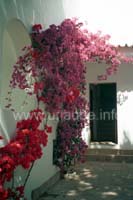
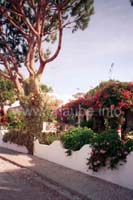
Already during the Roman times, this south western tip of Europe had a special significance. From the 14th up to the 16th century, this area was even the centre of the world, as from there, the big nation of seafarers Portugal sent its sailors to the sea. Today, Algarve has a big significance, as it is a paradise for vacationers from all over the world. 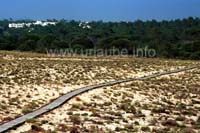
Some huge holiday resorts and hotel complexes were originated at the southern coast of Portugal. But Algarve could still keep its flair, as there were still enough places where one finds piece and quietness, where only local people meet. This is mainly due to the reason that not every spot of the coast of the Algarve is easy to access. Many beautiful beaches can be only accessed by having a long walk from the road. History of the AlgarveThe Iberian peninsula with Portugal at its west coast is named after the iberian immigrants who already came several thousand years before christ and inhabitated the country. At the time of the great Roman Empire, the romans inaugurated numerous provinces in south Portugal, built harbours and roads and brought the first zivilisation to the country. 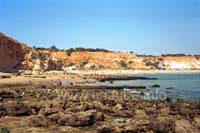
When at the beginning of the 8th century Arabian moors conquered the country, the actual development of Algarve begun. The moors not only colonized the country, they also brought plants and fruits and watered the country, so that it could be agriculturally used; While Portugal could be released in the 9th century from the moors, in Algargve, it still took up to the year 1250 when Alfons III. defeated the Arabian predominance in the south of Portugal. 
In the 15th and 16th century, Portugal became a world power; Numerous famous sailors as Magelan or Vasco da Gama discovered the until then unknown world, conquered some areas and brought some valued goods from far away into the country. In the city Sagres, the sailors from Portugal were trained, and from Lagos they departed to the sea. The predominance of the Portuguese was supposed to last until the fleet was completely defeated in the battles in front of north Africa. Since the year 1986, Portugal is a memebr of the EU. With the help of the EU, numerous streets could be built, so that the capitals got closer and the hinterland could be better included. The Portuguese Sailors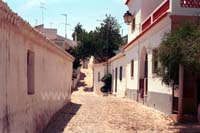
Although Heinrich the Sailor himself did not spend so much time on the high seas, he is a symbol for many portuguese sailors. Heinrich the Sailor was in Lagos and/or Sagres at home. He was the great leader and thinker, who captured the connections and sent the sailors to the sea. Heinrich mapped the oceans and the coasts, he designed numerous sea charts and led the Portuguese researches. Numerous captains learned from him how to read the maps and to navigate in accordance to the stars. While the think tank of heinrich was located in Sagres, in Lagos, some ships were built that were suposed to make thousands of kilometres in the main sea. Whereever the ships navigated to, they always brought - as long as they returned - new things, whether it was pepper or other spices, gold or any other high valued materials, or occasionally even slaves. 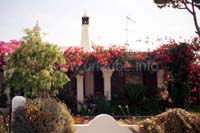
One of the most famous sailors of Portugal was Vasco da Gama, after whom the famous bridge of the capital is named. He circumnavigated the Cape of Good Hope in South Africa. Fernando Magela is not less famous, who "cleverly" circumnavigated the south tip of the Southamerican continent. For more than 100 years, Portugal was the leading sailor nation of the world. But by the end of the 16th century, they overextended themselves when the purely exploring journeys increasingly turned to conquest trips and the King Sebastião finally was defeated with almost 20.000 soldiers; According to the legend, one day, the King will return and help Portugal to a new glory . Climate, Landscape and VegetationAlthough Algarve is a relatively small area, there are still some big contradictions concerning the flora and fauna. In the coastal areas, there are numerous pine forests. In the inner part of the country, one finds an abundance of citrus fruits and countless cork oaks. The cork oaks have a thick bark that protects the trees against too extreme fluctuations of the temperature; Every nine years, the bark is peeled off and therefrom, for example, wine corks are made. The trees that have been released from the bark look somehow scant, but it does not take much time until it grows again. 
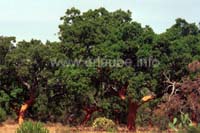
Right at the coast there are two landscapes: Sotavento and Borlavento. The eastern coast Sotavento is marked by sandbeaches and dunes, while the western coast Borlavento is characterized by rock cliffs and strong surges. Behind the coastal line, there are mountains up to a height of 900 m. Algarve is an extremely dry country. While in spring season, a dreamy beautiful flowerage of intensive flavours, during the high summer, the Algarve reminds on a desertscape with lack of water. The whole landscape disappears in a dust cover that is similar to the sand of a desert and that is not rinsed away before autumn when it rains. While during the summer time, the weather is sweltering and unpleasant, in spring and autumnm, there are pleasantly mild temperatures around 20°C. Even in the winter time, the temperatures are seldom below 10°C. Those who drive through the country with a rented car should not miss to take an air-conditioned car, as the sweltering heat and the dry air are really unbearable. 
Back to the index Portugal-Algarve Copyright: Patrick Wagner, www.tourist-guide.biz |
||